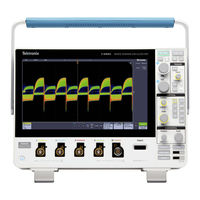
Tektronix 3 Series Manuals
Manuals and User Guides for Tektronix 3 Series. We have 3 Tektronix 3 Series manuals available for free PDF download: Printable Help, Service Manual, Instruction Manual
Tektronix 3 Series Printable Help (282 pages)
Mixed Domain Oscilloscope
Brand: Tektronix
|
Category: Test Equipment
|
Size: 5 MB
Table of Contents
Advertisement
Tektronix 3 Series Service Manual (42 pages)
Mixed Domain Oscilloscope
Brand: Tektronix
|
Category: Test Equipment
|
Size: 10 MB
Table of Contents
Tektronix 3 Series Instruction Manual (28 pages)
Electric Shutter and Speedcomputer
Brand: Tektronix
|
Category: Camera Accessories
|
Size: 6 MB
Advertisement


